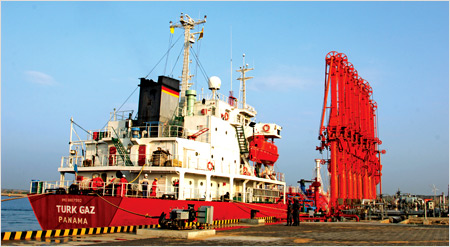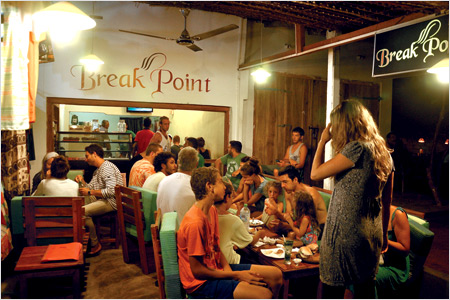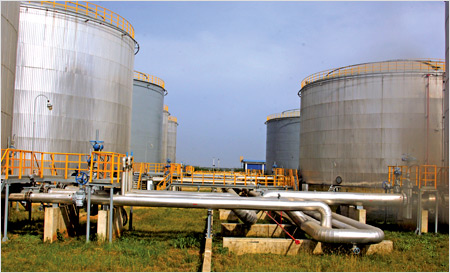|
Economy records huge progress under President
Rajapaksa:
Significant increase in expatriate worker remittance:
Economy on a steady path
Macroeconomic stability, key to business and
investment confidence:
Unemployment rate drops from 8.3 percent to 4.4:
By Lalin Fernandopulle
 |
|
More ships berthed at
the Magampura Mahinda Rajapaksa port |
During the
nine years under President Mahinda Rajapaksa, the Sri Lankan economy has
achieved unprecedented progress and the country has transformed from
developing country status to middle income country.
|
There was a
clear path in this journey. The first priority of the government
was achieving peace and it was achieved in 2009 and secondly
development of infrastructure and it too has been achieved
significantly. If you take any sector, ports, highways,
electricity, telecommunication or any
sector, today they are developed to the highest level enabling
the environment for private sector
involvement |
From 2015 onwards the government has laid the foundation for the next
phase of development to transform the economy to upper middle income
country and in the long run to achieve developed country status by 2035.
There was a clear path in this journey. The first priority of the
government was achieving peace and it was achieved in 2009 and secondly
development of infrastructure and it too has been significantly
achieved. If you take any sector, ports, highways, electricity,
telecommunication or any sector, today they have developed to the
highest levels in our history providing the environment for private
sector investment. Macroeconomic stability is the key to build business
and investment confidence. Until the defeat of terrorism in 2009,
governments in power did not have control over the economy. Frequent
attacks on key economic slots created panic in the business community.
Changes
Foreign investors were in a dilemma and FDI inflow dropped
significantly. Economic growth was low and it was a minus in 2003.
Average GDP growth rate during this period was around five percent.
If we compare statistics of 2004 and 2013 these changes in the
economy over the past nine years can be seen.
In 2004, GDP growth rate was 5 percent and it increased gradually and
by 2013 it recorded 7 percent. High and volatile inflation was another
issue that made business decisions more difficult. By 2004 annual the
average inflation rate was over 9 percent and it has now come down to
around 5 percent and is at a relatively stable position. Interest rates
which was around 20-22 percent has come down to 6-7 percent encouraging
private sector investment. The exchange rate stabilisation is another
achievement during the period.
The unemployment rate has declined from 8.3 percent in 2004 to
4,4percent in 2013 while the labour force participation has increased
from 48 percent to 54 percent.
Impressive
|

Tourists galore |
There is structural change in the economy during this period and the
industrial sector has grown while the share of agriculture and service
have declined slightly. The agriculture sector share has declined from
12.5 percent to 10.8 percent, industrial sector share increased from
28.6 percent to 32.5 percent while service sector share of the GDP
declined from 58.8 percent to 56.8 percent.
Sectoral growth too are impressive and especially in the agriculture
sector growth rates have increased. Agricultural sector growth rate at
-0.3 percent in 2004 has increased to 4.7 percent by 2013. Sri Lanka
became self sufficient in rice and maize during this period while
exports in tea, rubber and coconuts increased in quantity as well as in
price.
Earnings from tourism has increased from $ 417 million in 2004 to $
1,707 million in 2013 and the growth momentum continues. Government has
a target of 1.5 million tourists this year.
Worker remittance from expatriate Sri Lankans too has increased
significantly with government intervention to expand the sector by
exploiting new markets such as Korea, Malaysia and Israel. Foreign
Remittance increased from $1,564 million in 2004 to $ 6,407 in 2013.
These foreign exchange earnings has great contribution in filling the
balance of payment of the country and the BOP position of the country
improved from $205 million deficit in 2004 to $985 million surplus in
2013.
Macroeconomic stability
The government was committed to maintain a low budget deficit which
is crucial to maintain macroeconomic stability and international
financial agencies such as IMF and World Bank too are keen. The budget
deficit declined gradually from 8.2 percent in 2004 to 5.9 percent in
1013.
One major allegation against the government is borrowing heavily from
international sources and increasing debt burden. The government has to
invest in mega infrastructure projects which the private sector is
reluctant to invest in, such as ports, roads and railway lines.
The source of these investments are mostly on borrowing. However,
government debt is not at an alarming level and in terms of the
percentage of the GDP government debt has declined. The government's
foreign debts as a percentage of GDP has declined from 47.6 in 2004 to
34.1 in 2013. The benefits of this economic development has passed to
the vast majority of the people despite there is an increasing
inequality in the income distribution. Poverty level has declined
significantly and there is a growing middle class in the country. There
are several indicators that prove this scenario.
|

Oil storage facilities increase buffer stocks |
Expansion of the financial sector, especially the banking and
insurance sectors is one example. From 2004 to 1013 branch network of
domestic commercial banks has expanded from 1,056 to 2,576 branches.
Number of foreign bank branches has increased from 33 to 221 and the
number of specialised bank branches has increased from 178 to 390.
Regional Development bank branch network has expanded from 197 to 255
during this period.
The ATM network of the banks expanded from 1876 ATMs in 2004 to 2310
ATMs in 2013. New branches opened in the North and East provinces is one
reason for this huge expansion on one hand in addition to improved
economic activities all over the country.
Credit card usage increased from 491,196 to 951,320 during this nine
years period. All these factors are evidences for increased income and
domestic consumption.
Vehicle stock of the country increased from 2,297,711 to 5,203,678
and increase of the cars, motorcycles and three wheelers indicate the
growth of the middle class while the increase of the stock of buses
shows the development in the public transport system.
Access to basic infrastructure too has increased significantly during
this period. Access to electricity increased from 73 percent of the
population to 96 percent, access to safe drinking water increased from
73 percent to 88 percent. Mobile phone usage increased from 2,211,000 to
20,315,000 and internet subscription increased from 93,000 to 2,012,000
during this nine years period. These figures are the witness of changed
socio economic status of the people in this country during this nine
years period under the President Mahinda Rajapaksa's leadership. |

